Discover Whistler’s Iconic Trees: A Nature Lover’s Guide
Discover Whistler’s Iconic Trees: A Nature Lover’s Guide
Posted on October 22, 2024
Explore Whistler’s stunning trees this fall
From ancient cedars to colourful larches. Discover fascinating facts about the diverse tree species around Whistler Village and beyond. It’s the perfect season to plan a getaway and enjoy these wonders of nature!
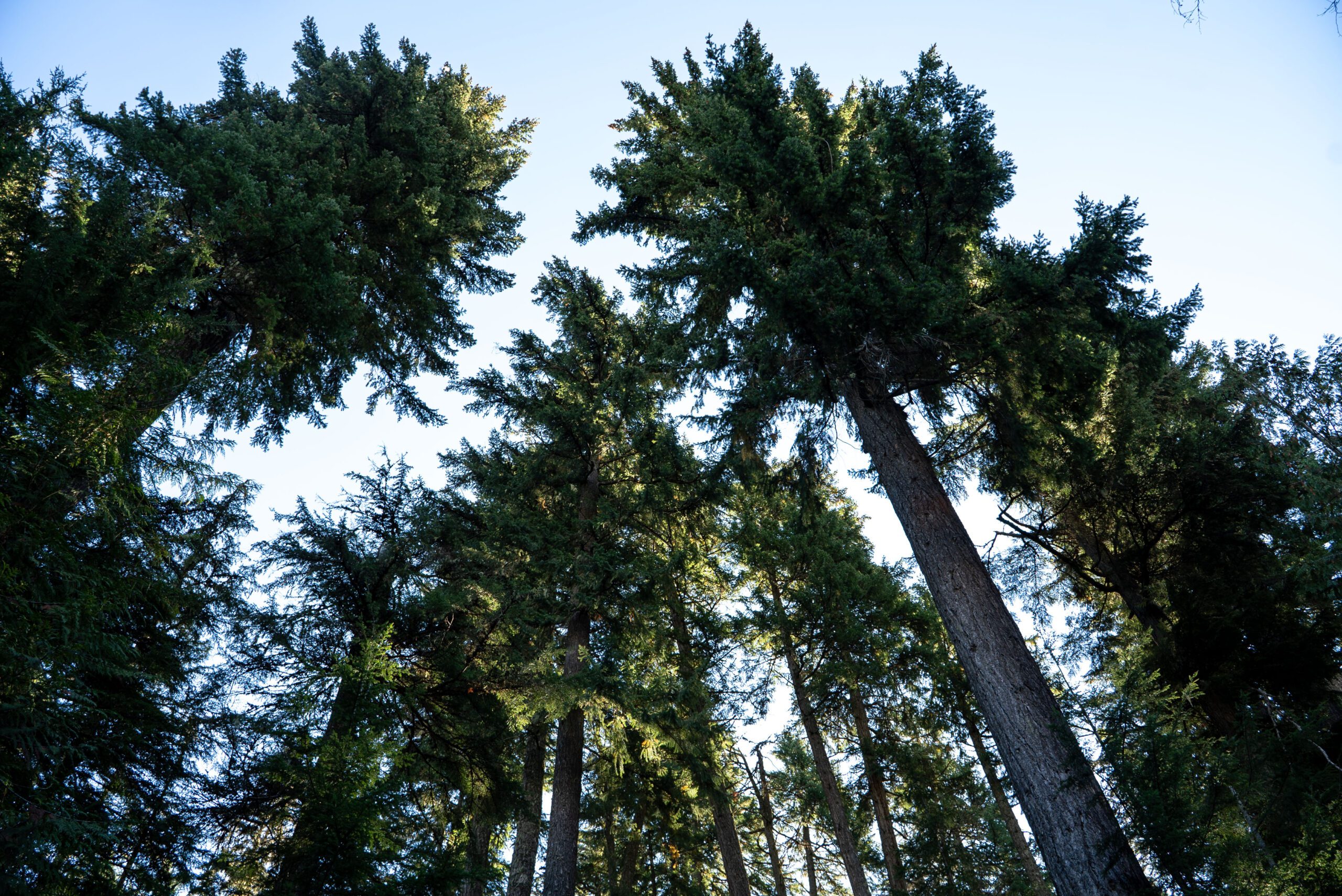
Whistler’s Tree Diversity: A Coastal Forest Marvel
Whistler is nestled within the Coastal Western Hemlock Zone, a forest ecosystem unique to the West Coast of British Columbia. This landscape is rich with towering conifers like Douglas fir, western redcedar, and western hemlock, forming what would naturally become a mature forest over time. However, forests are always evolving. Events like wildfires, landslides, and even human activity constantly shape their growth.
Beyond the forest giants, Whistler’s environment supports a mix of native and ornamental trees, including deciduous varieties like red alders and black cottonwoods. This blend of trees makes Whistler a nature lover’s paradise—and the perfect place for a fall tree tour! Below, we explore some of the most fascinating trees you can encounter during your visit.
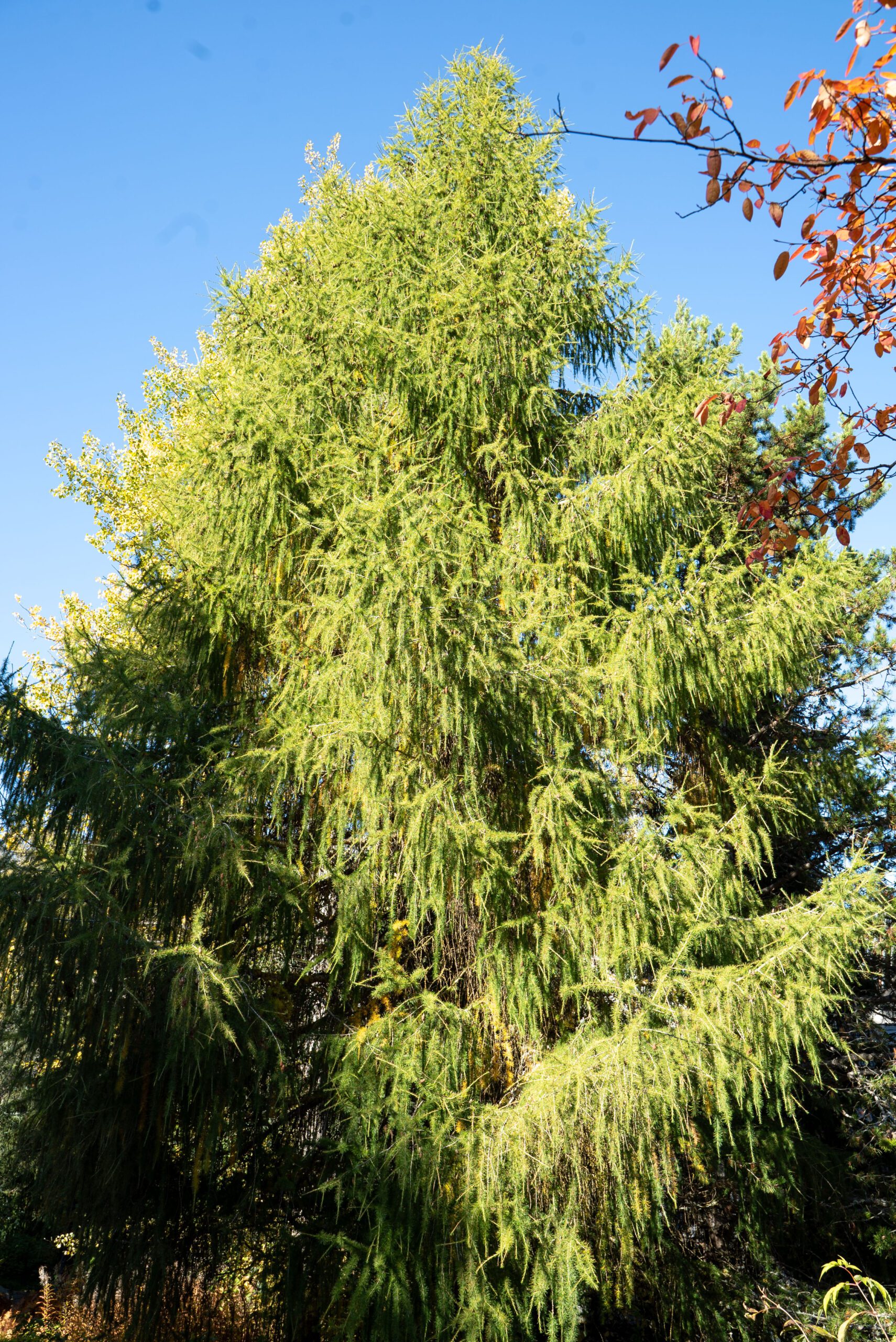
Western Larch by the Waterfall
Tucked near Northlands Boulevard, you’ll find a peaceful park featuring a small pond and waterfall. Among the greenery stands a rare western larch—a conifer not native to the coast but thriving here nonetheless.
Larches are unique because, unlike most conifers, they lose their needles in the fall, turning bright yellow before shedding. Their purple cones during early development also make them a striking sight. These deciduous conifers typically prefer colder, drier regions east of the mountains, making their presence in Whistler even more remarkable.
Location on map: https://maps.app.goo.gl/7dDGTZHbZfMrgouz5
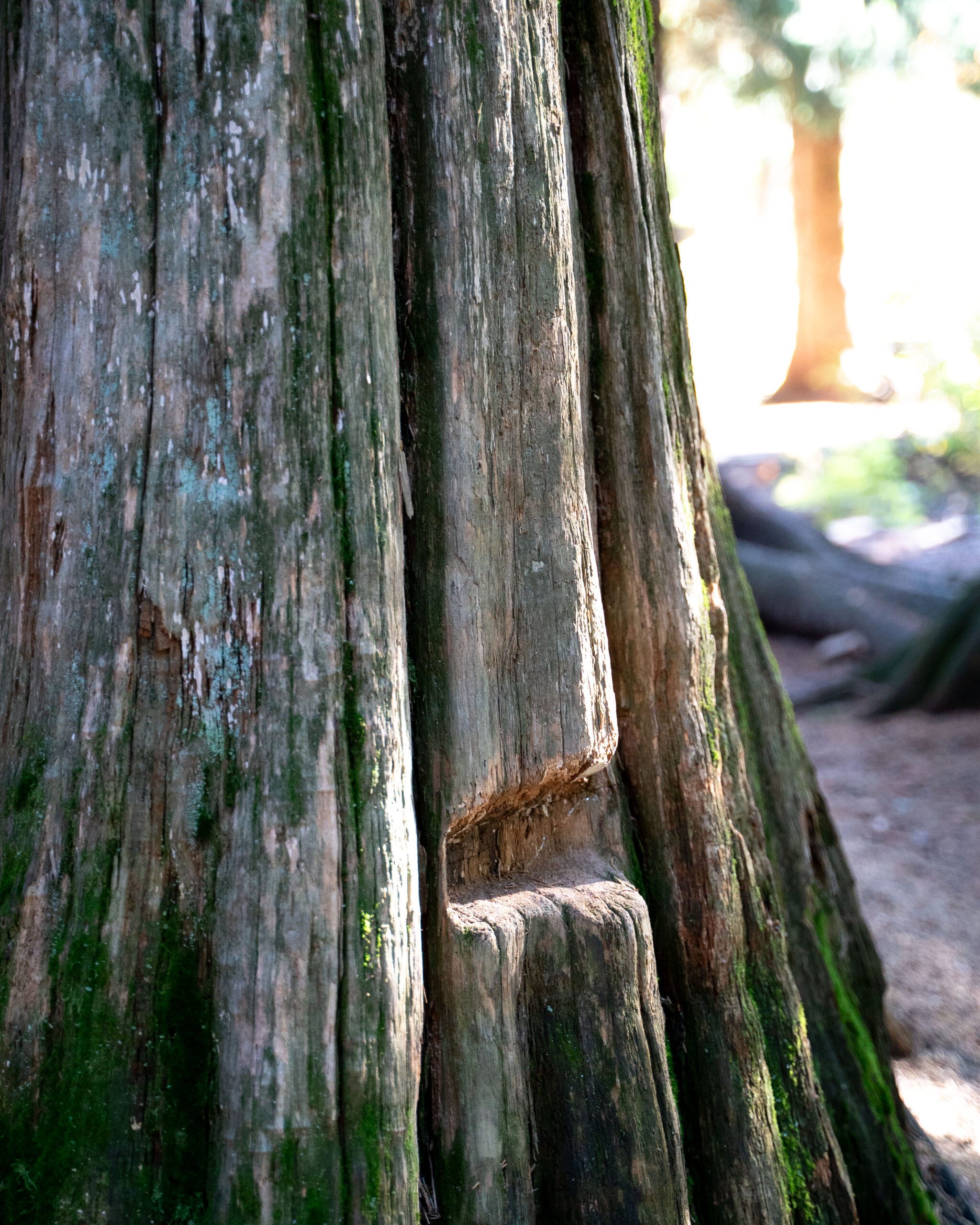
Red Cedar Stumps in Florence Peterson Park
Just across the street lies Florence Peterson Park, home to remnants of Whistler’s logging past. Among calming pools and trails, you’ll notice giant western redcedar stumps with rectangular notches—remnants of old logging techniques. These notches, called “springboard notches,” allowed loggers to stand higher up on the trunks for easier cutting.
Even though these trees were felled nearly a century ago, the stumps still support new growth. Look closely, and you’ll see tiny redcedar and hemlock saplings sprouting from them—proof that nature’s cycle continues.
Location on map: https://maps.app.goo.gl/nrQNE8zPU6BuVePv9
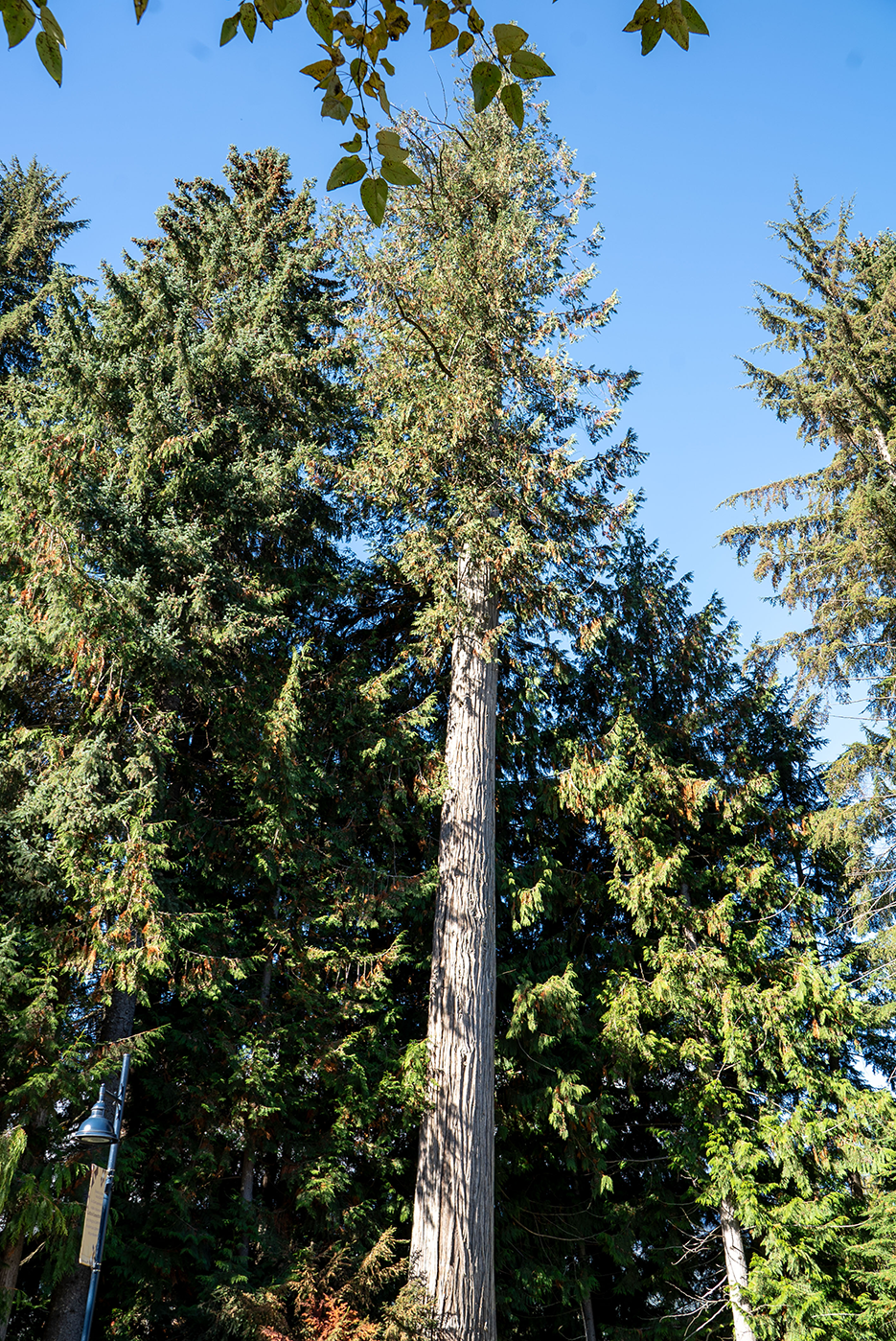
The Ancient Red Cedar at the Bike Park
Behind Day Lot 3 on the Valley Trail stands one of Whistler’s oldest residents: a magnificent western redcedar. This tree is estimated to be over twice as old as Whistler itself! With a massive trunk that could take several people to embrace, it’s a living testament to the ancient forests that once dominated this valley.
Nearby, you’ll also spot the stump of another cedar with a young hemlock growing from it—another example of how life continues to flourish amidst change.
Location on map: https://maps.app.goo.gl/Bz3haZRq4YkQKCev7
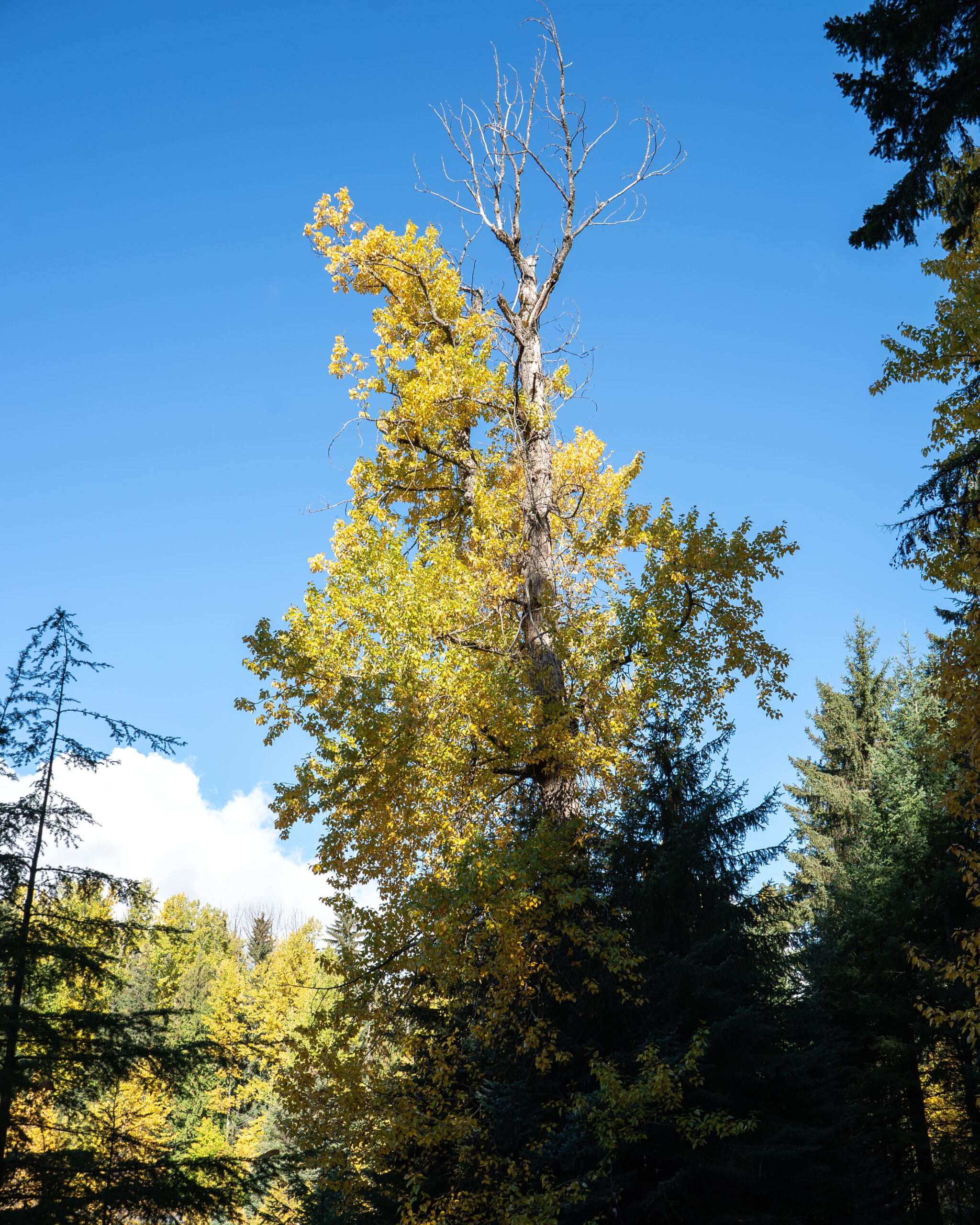
Black Cottonwoods Along Fitzsimmons Creek
The trail along Fitzsimmons Creek offers a glimpse of a different forest type—one dominated by deciduous trees like black cottonwoods. These massive trees thrive in wet, open spaces where they soak up sunlight and water. In fact, cottonwoods can drink up to 500 litres of water a day!
Despite their impressive size, cottonwoods are relatively fragile due to their high water content. They often develop large burls (woody growths) and are susceptible to frost damage, but their deep roots help stabilize riverbanks, making them essential to the local ecosystem.
Location on map: https://maps.app.goo.gl/5yX5oBVQpdn5Sz2V8
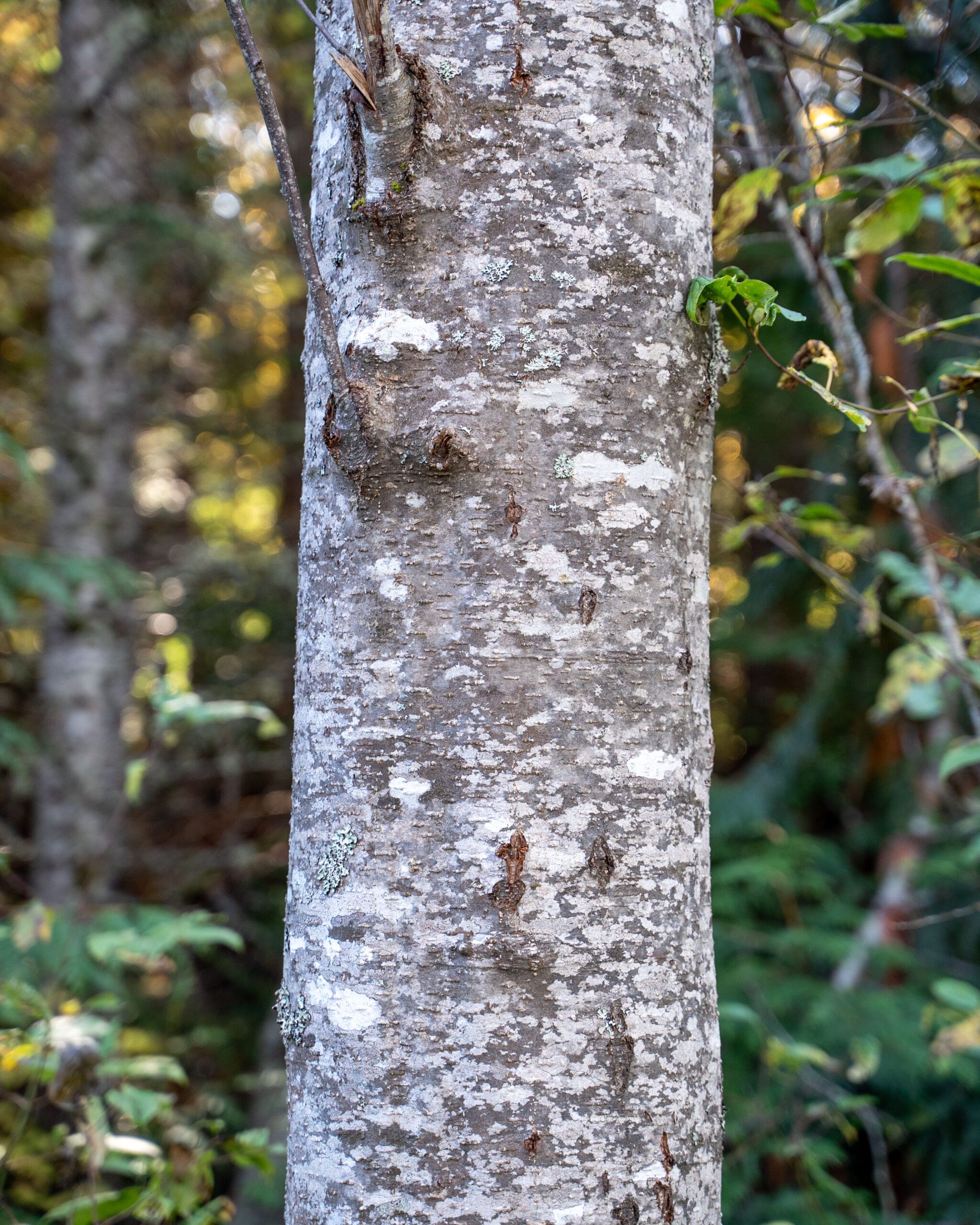
Alder Grove in the Lost Lake Wetlands
The red alders near Lost Lake are stunning in every season, but they really shine in the fall. Their leaves turn golden before dropping to the ground, enriching the soil with nitrogen—an essential nutrient for other trees to grow.
Alders play a crucial role as pioneer species, thriving in disturbed areas with poor soil and paving the way for conifers like cedar and spruce to take root. Thanks to their contribution, this forest will eventually mature into a diverse ecosystem filled with life.
Location on map: https://maps.app.goo.gl/iw7K5Vq2fmxxcJH88
Plan Your Fall Getaway to Whistler
There’s no better time than fall to experience Whistler’s trees. With the leaves changing colours, cooler weather, and fewer crowds, it’s the perfect season to explore the trails, breathe in the fresh mountain air, and marvel at the unique beauty of these forests.
Whether you’re strolling through Florence Peterson Park, hiking along Fitzsimmons Creek, or admiring the golden hues of the larches, there’s always something new to discover. Book your stay at The Crystal Lodge today and immerse yourself in the natural wonders of Whistler.
Enjoy your time in Whistler, and don’t forget to share your favourite tree facts with friends. Happy exploring!
For more information or to book your Whistler stay, contact our friendly Guest Services team at 1.800.667.3363 or [email protected].
